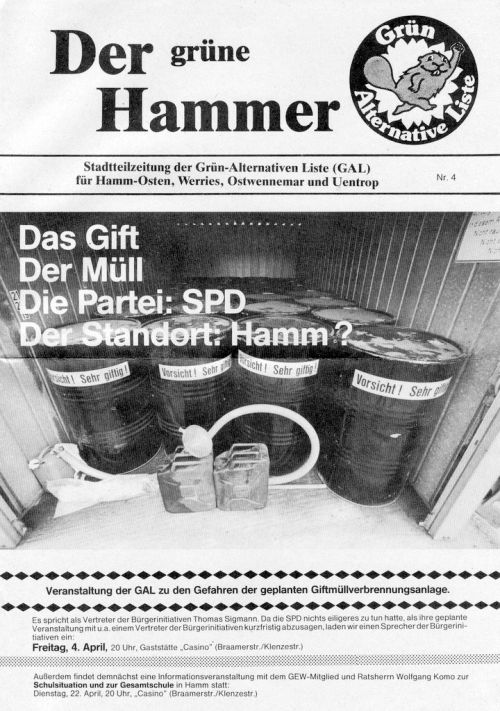06 Apr 2015
THTR in China: One raid and a pile of bullets ...
From Horst Blume
In South Africa, numerous secret service scandals shake the country and also cast a very bad light on “friendly” China, which is making a name for itself with all sorts of major investments on the African continent. This year, fed by sources from the South African secret service, the English daily newspaper "Guardian" and the Arab television station "Al Jazeera" published a great deal of information about the work of foreign agents in South Africa.
We are interested in an aspect that goes back to a mysterious event including an exchange of fire in the Pelindaba nuclear center in 2007. The "Frankfurter Rundschau" writes:
“The revelations of the African“ brother power ”China are likely to be embarrassing. According to the SSA (State Security Agency), armed Chinese agents broke into the Pelindaba nuclear facility near Pretoria in 2007 to steal classified documents about South African pebble bed reactor technology. At the time, South Africa was one of the leaders in the method developed in Germany for generating nuclear power. In the meantime, research on the Cape has been stopped for financial reasons, while China has taken the lead ” (1).
Exchange of fire in the nuclear center
In Pelindaba, South Africa, not only the now defused atomic bombs from the apartheid era were stored, but also the first radioactive fuel elements for the planned Pebble Bed Modular Reactor (PBMR), which was to be built with the help of Forschungszentrum Jülich (FZJ). I commented on the attack in the 2007 THTR newsletter as follows:
“A week after the worst attack on a nuclear facility in recent history, some new details are revealed. The South African security authorities are obviously still in the dark. (...) The first group of four armed men seized a computer, which was then left on a balcony near the control center. It is not yet known whether the hard drive has been removed. On the South African websites of various newspapers it was stated that the perpetrators must have been extremely familiar with the nuclear facility. Only a highly specialized group with insider knowledge could therefore have been able to switch off alarm systems and overcome all barriers. The perpetrators apparently knew exactly where they wanted to take action " (2).
In retrospect, the "highly specialized group with insider knowledge" presumed behind the action turns out to be not so absurd and clearly shows the criminal methods used by the nuclear industry. In the meantime, with the help of the information apparently captured by this secret service operation, China is continuing to build the high-temperature reactor on the Shandong peninsula (Weihai) (3). The fuel assembly plant in Inner Mongolia (Baotou) is reportedly as good as finished and is undergoing several tests. The annual production of 300.000 radioactive fuel elements is to begin in August 2015 (4).
FRG researchers and institutions work for the HTR in China
If you read the article on the English-language homepage “World Nuclear News” (WNN) about the HTR-PM (also called High-temperature gas-cooled reactor - HTGR) under construction in China, it is noticeable that the Netherlands and Germany are involved in its development. In the Dutch "NRG Hot Cells" in Petten, five Chinese fuel element balls have undergone various test procedures since 2012. In a second step, despite all the full-bodied commitments to phase out nuclear power, the Karlsruhe Institute of Transuranium Elements (JRC-ITU) carried out warming tests under accident conditions with the Chinese HTR fuel (5).
From October 27 to 31, 2014, an international HTR congress took place in Weihai, China, at which German scientists were able to “shine” with their presentation of their own research results on the THTR. The Technical University of Dresden was represented by Professor Hurtado, the Jülich Research Center by Professor Allelein and S. Kasselmann, the Institute for Nuclear Energy and Energy Systems (IKE) University of Stuttgart by J. Lapins, Westinghouse Germany by D. Knoche, etc. (6). Although the FRG is "withdrawing" from nuclear power, research continues on the HTR line, despite all assurances and pronouncements!
Unpredictable globular cluster
But the Chinese HTR fans will continue to have one problem in the future, despite diverse support from Europe: on the proverbial unpredictable pebble of pebbles!
Six Chinese scientists are grappling with this problem, which has been known for decades, in a recent study: "Analysis of the porous structure of an unevenly packed pebble of a gas-cooled high-temperature reactor". The oh so bad gravity causes problems again: "In the axial direction there are fluctuations in the lower area of the pebble cluster and the porosity varies due to the influence of gravity with the height of the pebble cluster" (7).
Couldn't you have thought this through before building the reactor? - Well, how to tame this chaotic cluster of pebbles, unfortunately we can't help either, although in Germany we can look back on decades of experience and experiments. In any case, we wish you toi, toi, toi - and hopefully nothing bad will happen ...
Notes
1. “Frankfurter Rundschau” from February 26, 2015
2. THTR Circular No. 118, December 2007
3. "World Nuclear News" of January 5, 2015
4. "World Nuclear News" from September 19, 2014
5. See note 3
6. http://www.inet.tsinghua.edu.cn/htr2014/
- http://archer-project.eu/images/roelofs.pdf
- http://archer-project.eu/images/lustfeld.pdf
- http://archer-project.eu/images/seeger.pdf
- http://archer-project.eu/images/stckel.pdf
*
Further to: Newspaper article 2015
***
Top |
***
Donation appeal- The THTR-Rundbrief is published by 'BI Umwelt Hamm e. V. ' - Postfach 1242 - 59002 Hamm and financed by donations. - The THTR circular has meanwhile become a much-noticed information medium. However, there are ongoing costs due to the expansion of the website and the printing of additional information sheets. - The THTR circular researches and reports in detail. In order for us to be able to do that, we depend on donations. We are happy about every donation! Donations account:BI Umweltschutz Hamm |
***
Top |
***



